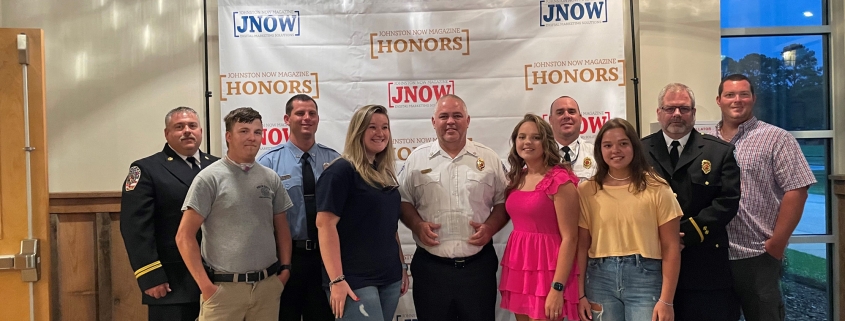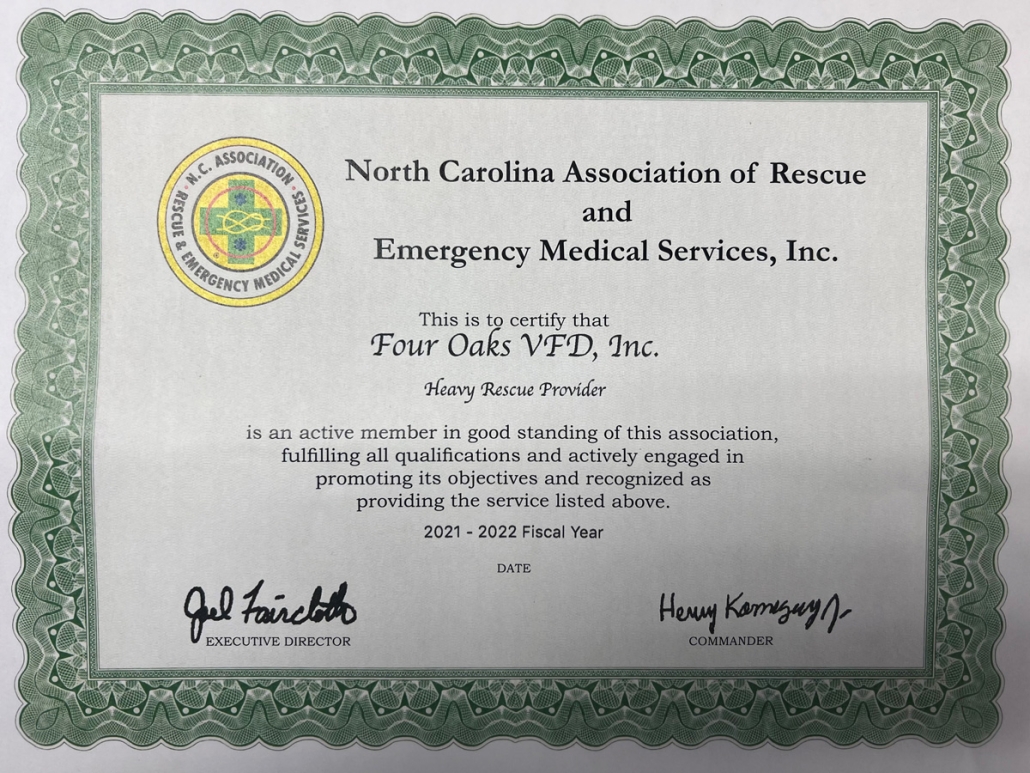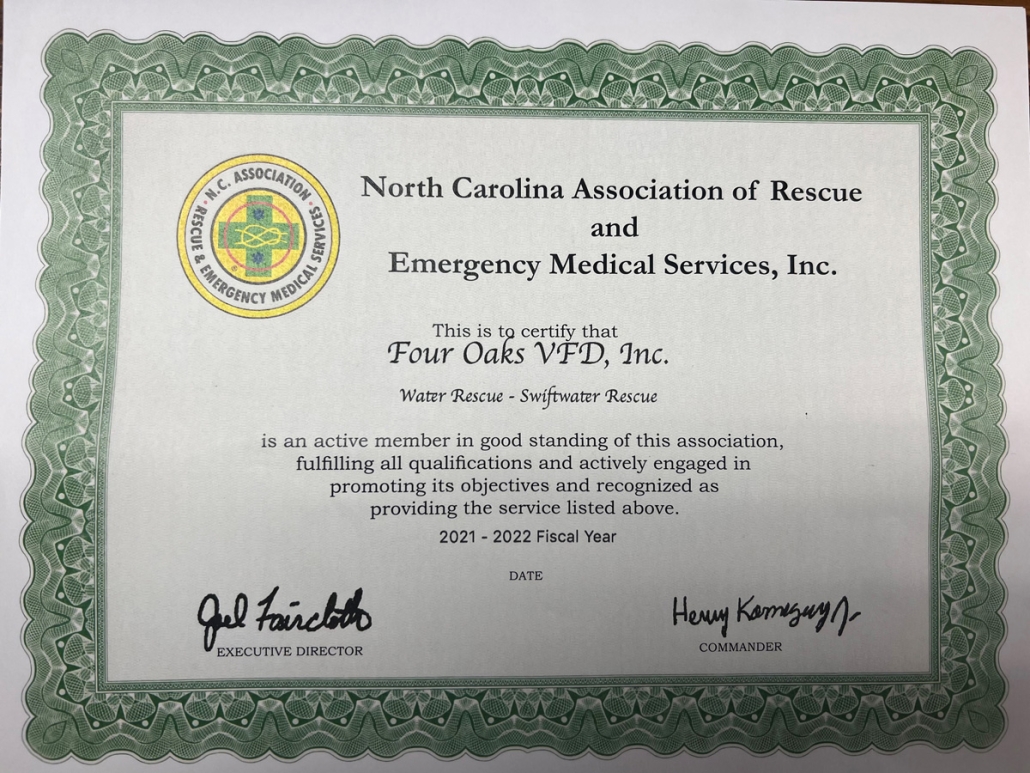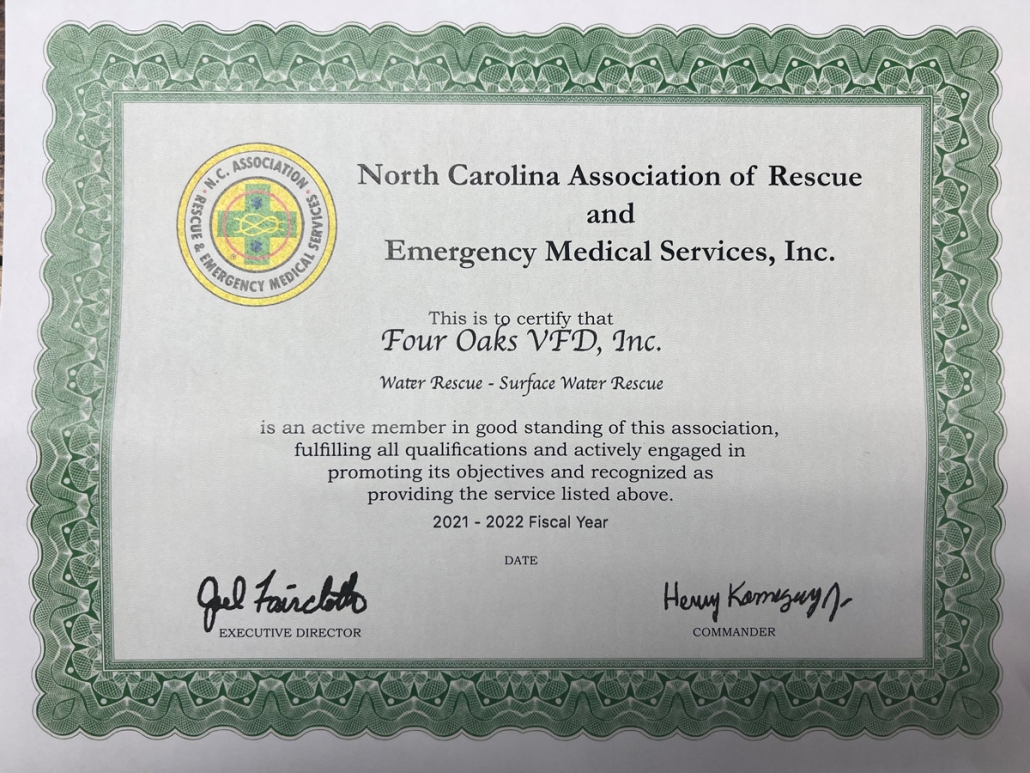The ISO (Insurance Services Office) Fire Score is a rating that determines how well the fire department can protect your community and home. Insurance companies use the score to help set home insurance rates, as a home that is less likely to be severely damaged or destroyed by fire is cheaper to insure. However, the impact of our ISO score on your homeowners insurance policy varies by insurer. What’s more, ISO does not publicly release scores, so it’s not easy to look up your area’s score or how it’s impacting your insurance rates.
The Four Oaks Fire Department has worked diligently to improve its ISO Fire Insurance Rating from a 4/9E to a 3/9E.
What does this mean exactly?
A company called the ISO (Insurance Services Office) creates ratings for fire departments and their surrounding communities. The ratings calculate how well-equipped fire departments are to put out fires in that community. The ISO provides this score, often called the “ISO fire score,” to homeowners insurance companies. The insurers then use it to help set homeowners insurance rates. The more well-equipped your fire department is to put out a fire, the less likely your house is to burn down. And that makes your home less risky, and therefore less expensive, to insure.
An ISO fire insurance rating, also referred to as a fire score or Public Protection Classification (PPC), is a score from 1 to 10 that indicates how well-protected your community is by the fire department. In the ISO rating scale, a lower number is better: 1 is the best possible rating, while a 10 means the fire department did not meet the ISO’s minimum requirements.
According to the ISO’s Fire Suppression Rating Schedule (FSRS), there are four main criteria to a fire rating score:
- 50% comes from the quality of your local fire department including staffing levels, training and proximity of the firehouse.
- 40% comes from availability of water supply, including the prevalence of fire hydrants and how much water is available for putting out fires.
- 10% comes from the quality of the area’s emergency communications systems (911).
- An extra 5.5% comes from community outreach, including fire prevention and safety courses.
- Any area that is more than 5 driving miles from the nearest fire station is automatically rated a 10.
Depending on your state, it’s possible to get a maximum score of around 106% on the survey, although any fire department that scores above 90% receives the highest ranking, a 1. Very few fire departments receive that ranking–only 0.71% of all communities surveyed have a 1. A rating of 5 is both the median and most common rating fire departments received. In general, urban areas tend to have better PPC scores than rural areas, as urban fire departments are closer together and often receive better funding.









